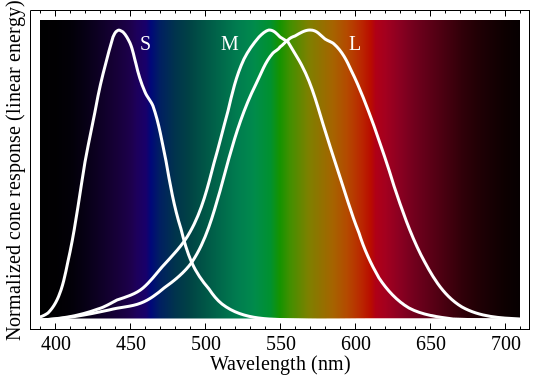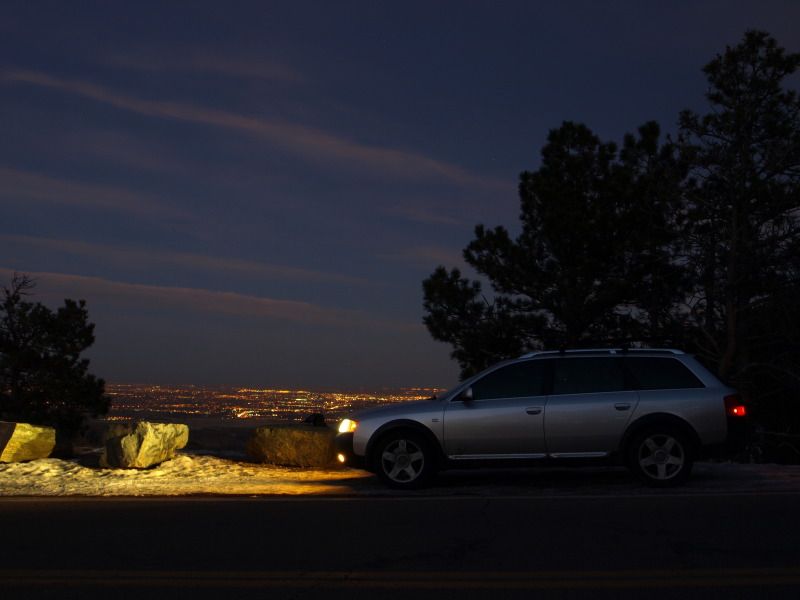Here's the two most common myths:
1: Yellow is the most visible color to the human eye.
2: Yellow has a relatively long wavelength and therefore is less refracted by the moisture in the air.
Lets start mythbusting:
1: Yellow is the most visible color to the human eye.
Nope. While it(the 575nm range) is one of the more visible colors, it is actually green, at 555nm.
Here's the response spectra of the cone's in your eyes, normalized.

And here's the normalized relative brightness over all visible light. As you can see its greenish yellow, right around 555nm.

From the Plankian Locus(below) we can see that 555nm correlates to about 5500Kelvin of color temperature.

As it turns out, thats damn close to the temperature of the sun(5800K). It is no coincidence that the human eye is most sensitive to light from the sun.
So, for best visibility, choose an HID bulb in the 5500K range.

2: Yellow has a relatively long wavelength and therefore is less refracted by the moisture in the air.
This is based in truth, 575 is one of the longer wavelengths in the visible range(but not as long as red) and Lord Rayleigh discovered "Rayleigh Scattering" which essentially says that light is reflected/diffused by the molecules in the air, which is why the sky is blue(a mixture of diffused light, more blue and violet, the shorter wavelengths). Similarly, this is also why when you turn your brights on in the fog or snow it practically blinds you, the light is hitting "molecules" and reflecting the light around. So, longer wavelengths become less scattered, this is true, but it is essentially negligible when dealing with "molecules" the size of rain, snow, and fog.

As much as I wanted it to be true that yellow fog lights improve vision....science says it is not.
But atleast they look cool

Feel free to chime in if you have more knowledge in the subject. Ive been exposed to radiation/light in my heat transfer course, but Im mostly self taught in the subject, so maybe my facts arent totally straight.













 Reply With Quote
Reply With Quote






Bookmarks